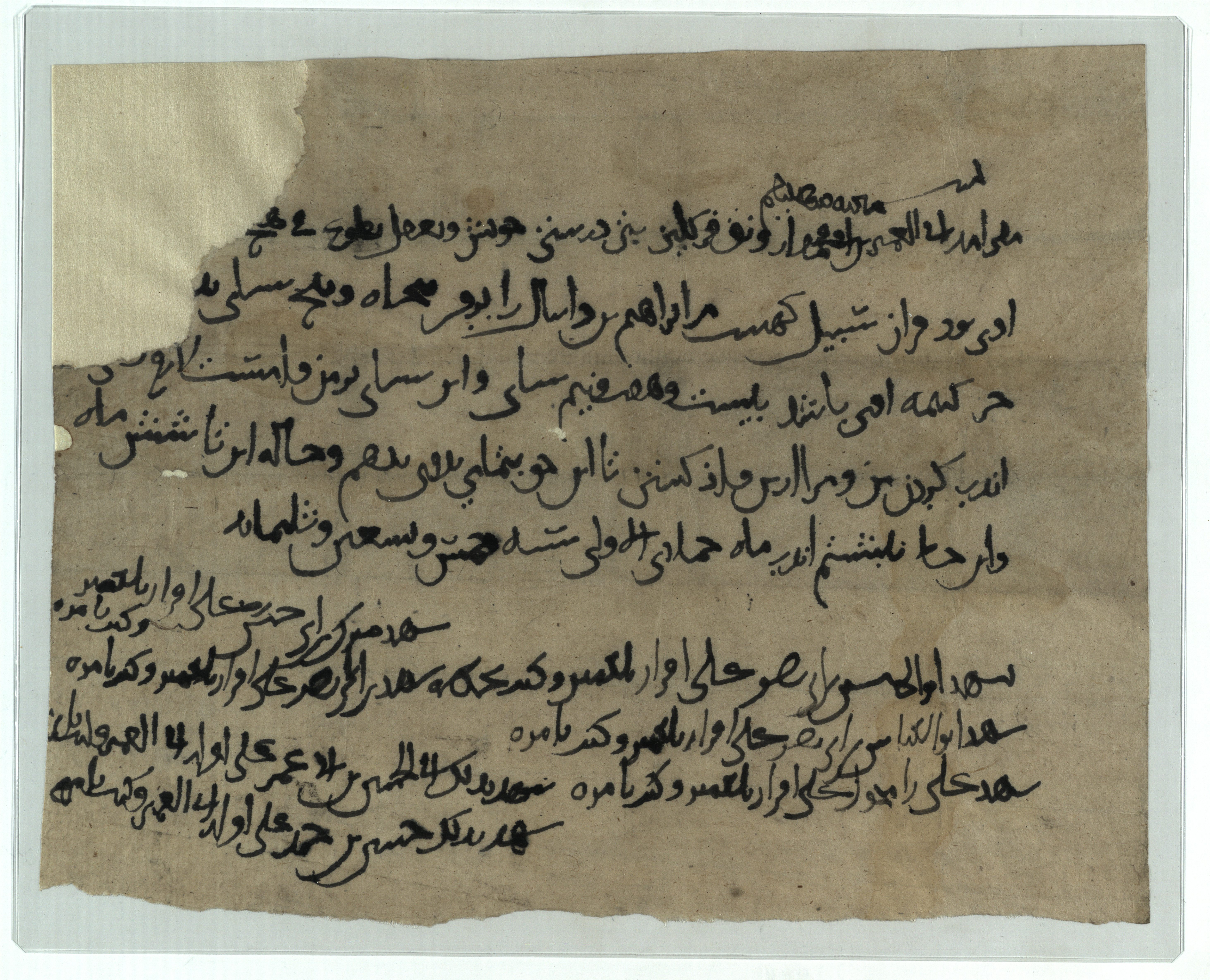Tuesday, January 8, 2013
A genizah of Jewish manuscripts from Afghanistan: 11th century
About a year and a half ago, the National Library of Israel got word regarding the existence of a stash, a genizah, of Jewish manuscripts from Afghanistan. The news was backed by numerous photographs. The manuscripts left Afghanistan and reached antiquaries in different countries, bound together in bundles of varying sizes.
A letter in Judeo-Persian dealing with financial and family matters.
The material includes many dozens of fragments in Hebrew, in Judeo-Arabic, in Judeo-Persian and in Muslim Arabic. The documents written in Muslim Arabic are dated and their content is of a legal nature. Based on these items, we can date the Afghan genizah to approximately the first half of the 11th century. The National Library has now purchased 29 of these fragments. This lot includes fragments of commentaries by Rav Sa'adia Gaon in Judeo Arabic, letters and other documents in Judeo-Persian and legal documents in Arabic. This is an extremely important finding, being a unique testimony, both in nature and in volume, of the cultural history of a Jewish community in an area which in the 11th century included highly important political, cultural and economical centers. To this day we have not seen Jewish findings of such magnitude and importance from this area. Everything indicates that the findings are authentic, as attested by the experts consulted by the National Library.
A legal document in Judeo-Persian (February 1005 CE).
We know very little about Afghan Jews in the Middle Ages. Those interested in learning about this topic can turn to Benzion D. Yehoshua-Raz's book, "From the Lost Tribes in Afghanistan to the Mashhad Jewish Converts of Iran", and discover there that Jews in the Razavi Khorasan Province, the land that today is situated between Iran and Afghanistan, are mentioned in the Arabic literature of the Middle Ages and in period interpretations of the Bible. Khorasan is mentioned in Middle Age rabbinical and biblical writings as the home of the ten tribes and in Rabbi Sa'adia Gaon's interpretations the name is mentioned in connection with the Assyrian exile. Benzion Yehoshua cites these details as well as archeological evidence to the connection between Khorasan Jews and Babylonian Jews. The evidence presented in Yehoshua's book is taken mostly from Jewish headstones discovered in Khorasan.
Related article
Subscribe to:
Post Comments (Atom)


No comments:
Post a Comment